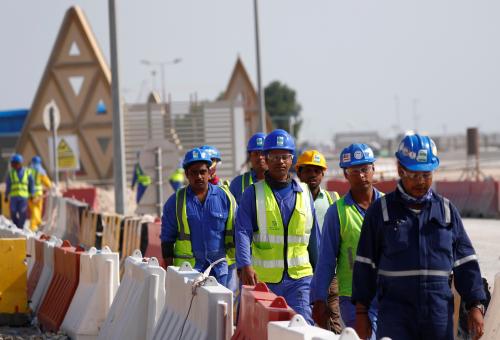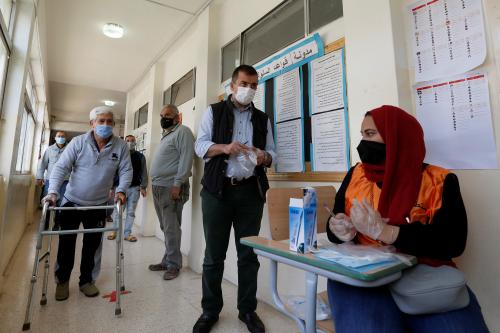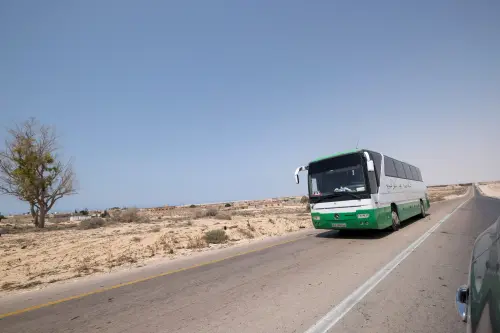Content from the Brookings Doha Center is now archived. In September 2021, after 14 years of impactful partnership, Brookings and the Brookings Doha Center announced that they were ending their affiliation. The Brookings Doha Center is now the Middle East Council on Global Affairs, a separate public policy institution based in Qatar.
Over the last couple of decades, much of the Middle East and North Africa (MENA) has been witnessing frequent protests, labor unrest, localized demands for development, and movements for autonomy or even secession. While those incidents have communicated a wide variety of grievances, a closer look at the geographic locations of specific demands highlights some recurring themes in localities with similar characteristics, such those that are rich in resources.
As the infographic below shows, the resource rich lands of the Kurdish Region of Iraq and Basra, Barca in Libya, Khuzestan in Iran, Gafsa in Tunisia, the Eastern Province of Saudi Arabia, Hasakah and Deir el-Zour in Syria, and Hadramawt and Sheba in Yemen have all voiced grievances about neglect, despite the fact that resources revenues are generated from within their areas.
Much of the demands in those regions are reminiscent of the kinds of demands expressed by MENA states when they nationalized resources from foreign firms during their push to gain independence. In the previous century, states protested the fact that firms were directing revenues away from the lands that generate them and depriving countries of much needed capital and wealth. Resource nationalization gained traction to retain more revenues locally.
However, when colonial powers retreated, the highly centralized MENA states continued a spatially biased development policy that had featured under colonial rule, favoring urban and coastal centers over the remote rural areas where most resources happen to be located. Once again, the resource revenues were being directed away from the lands that were generating them. While “resource nationalism” justified efforts by states to gain control over natural resources from foreign firms, “resource regionalism” emerged to justify demands in resource-rich communities to retain more revenues locally.
The emergence of resource regionalism reflects a reality where spatial inequality is coupled with high levels of social fragmentation and conflict. When national identity and cohesion proved weak, communities living within resource rich lands became interested in retaining more resource revenues in an attempt to remedy their political and economic grievances by applying the logic of resource nationalism but in a narrower regional context.
If left unaddressed, resource regionalism can exacerbate instability. Tensions can transform these countries into fertile ground for extended conflict, as different actors start competing over the resources. This is especially likely in the event of political shocks such as civil war, regime change, popular uprisings, partition, or foreign invasion.
Resource regionalism increases the urgency of addressing spatial inequalities in development. However, poorly crafted mechanisms that pay attention solely to the grievances of resource-rich regions, while neglecting regions that suffer from similar marginalization and disadvantage but happen to be poor in resources, can reinforce the perception that regions that are rich in resources have a higher right over them. This turns regionalism into a politically profitable way of collecting rent, thus reproducing the same regional divisions. Revenue sharing arrangements that address spatial inequalities on the national level are necessary to alleviate those tensions without encouraging regionalism.
Similarly, mechanisms that maintain resource dependency can make resources an easy target for sustained tensions and conflict. Diversification therefore becomes a key tool that can help break the cycle of conflict over resources and promote stability.





Commentary
Op-edInfographic: Resource regionalism in the Middle East
Wednesday, April 4, 2018